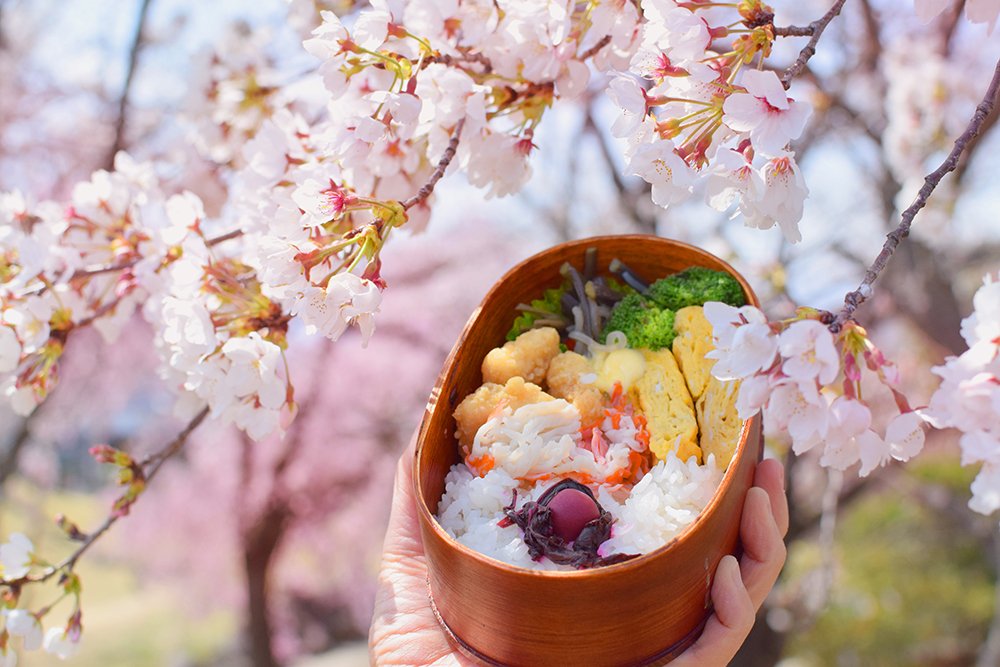Stunning cherry blossoms gently swaying in the breeze as petals slowly dance to the ground. Laughter and chirping birds fill the warm air while families and friends gather to welcome the beauty of spring.
Hanami is just one of the few traditions that take place in Japan during this time of year, and the picturesque scenery is a key factor behind why this country is such a popular destination for many people across the world.
This can be seen from the fact that spring is a favored time for tourists to visit. The interesting thing is that cherry blossoms are not unique to Japan and can be found in all stretches of the globe. However, it has been ingrained in Japanese culture to highlight and celebrate the changes of each season, as well as to be thankful for nature’s beauty.
What is hanami?
Hanami is a Japanese word that directly translates to ‘flower viewing.’ While this can be used to describe any sort of flower viewing, it is almost exclusively used when referring to cherry blossoms or ‘sakura.’
The seasons are something that are cherished by the Japanese, and the changing of the seasons are always welcomed with various events and customs. For example, the summers are synonymous with fireworks and festivals, autumn is recognized for its fiery foliage colors, winter is famous for its new year’s celebrations, and spring is all about the cherry blossoms.
When thinking of hanami, the image that immediately comes to mind is that of people coming together to share food and drinks under the fleeting petals of a fully bloomed sakura tree. Exchanging stories, laughing and conversing under the pink canopies while picnicking — this is the epitome of hanami.
Given that the cherry blossoms typically only last about two weeks, it’s a very limited and time sensitive period attracting millions of people who want to view the phenomenon for themselves. As the sakura fall as quick as they bloom, everyone awaits with bated breath for the first blooms. Then in a flash, it’s a sea of people rushing to the many sakura spots to see them all.
Hanami Picnics
As previously mentioned, picnics during the cherry blossom period is the main focal activity that symbolizes the coming of spring. Not only are the pink flowers a sight to behold, but the warmer weather and clear skies make it the perfect occasion to spend some good quality time outside.
Being able to get together with friends and family, to share food and drinks surrounded by petals as they flutter to the ground is such a serene and peaceful experience. This is a tradition that has been going on for thousands of years, being described in literature and poetry. It has grown and become a huge highlight of the year that has developed into a trademark of Japan.
But what sort of foods and drinks would you typically expect at a hanami picnic?
Hanami has deep rooted connections with the past, so some sort of ‘wagashi’ (which are traditional Japanese sweets) is practically essential to see. There will be a lot of overlap with pink colored or sakura flavored food to match the pink aesthetic of the cherry blossoms. Some examples are ‘sakura mochi’ which is pink and wrapped in a cherry blossom leaf, and ‘hanami dango’ which are three mochi-like balls on a stick, with each ball being a different color of pink, white and green.
To provide something a little more filling, nice and simple foods such as onigiri, sushi and a small bento are an excellent choice. People will usually pack these with rice and an assortment of sides like fish, vegetables, meat and sometimes an ume plum.
As it is an occasion where you gather with people, the popular drinks of choice are alcohols. Japanese sake or any of the specially flavored or packaged drinks for hanami is a good place to start. For non-alcoholic drinks, there’s green tea for people who want to stay in the traditional lane, but fruit juice and the reliable thirst-quenching beverage of water also never disappoint.
Festivals
Another custom you will find during the blooming hanami season are festivals, known as ‘matsuri’ in Japanese. While festivals are most frequent in summer, you can still find a few popping up in various spots throughout the year. For those who will not be here in summer to witness these spectacles or to avoid the hellish humidity and heat, spring is still a great option. The weather is warm but not too hot, and the background of pink that is stroked across the landscape like a painting makes it a truly magical moment.
If there’s anything to go by for these traditional Japanese customs when it comes to the celebrations of the seasons, it’s that these moments and periods of time come and go so fast. It is important to remember to slow down and enjoy the little things that make us happy.







